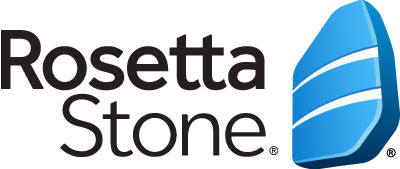


The RS program has outlined a number of different courses based on specific learning objectives. Here is where the increased flexibility comes in. Each student (or the parent/teacher) can determine his Course through the program based on various combinations of these different components. Milestones serve as end-of-unit "rewards" allowing the student to practice his new language by speaking and interacting in real-life scenarios. Each lesson also includes a formal Review and Test that evaluates the student on the material he has learned to that point. As the language is mastered, Adaptive Recall appears at longer intervals. A feature called Adaptive Recall schedules review material to reappear at an optimal time to help move language into long-term memory. The Focused Activities are exercises that concentrate on language skills vocabulary, pronunciation, grammar, reading, speaking, listening, writing. The Core Lessons utilize a full range of skills (A) Listening & Reading combined, (B) Listening only, (C) Reading only, (D) Speaking, and (E) Writing. Each Unit has Core Lessons, Focused Activities and a Milestone. These Units each focus on a language topic such as greetings and introductions, work and school, shopping, etc. Rosetta Stone levels are divided into Units. This methodology bypasses the old translate-in-your-head approach. Constantly building toward language acquisition, the student explores his understanding by spoken responses to real-life simulations completing the instruction picture. This learning is reinforced by constantly interacting with the program making selections which are confirmed if correct. These images convey meaning by using your intuition to discern meaning from the clues provided in the images.

First of all, real-life images are coupled with words or phrases both spoken (by native speakers) and written. The resulting Dynamic Immersion environment utilizes four aspects images, intuition, interactivity, and instruction. Rosetta Stone combines multimedia technology with a total immersion approach. And there are some technical tweaks that will make the homeschool moms life easier. But there are some changes: more grammar and writing activities, more curriculum structure, more flexibility in meeting learning objectives. The "dynamic immersion" methodology that distinguishes Rosetta Stone is still foundational. Version 3 is not just a revision of the old, it is a complete reworking and rewriting of the entire program. State Department, thousands of elementary and secondary schools, as well as colleges and universities across the country are all users of The Rosetta Stone, so why change it? Well, Im beginning to appreciate why the Rosetta Stone people are excited about their newest version. Weve all heard the adage "If its not broke, dont fix it." That was my initial reaction when hearing that Rosetta Stone was coming out with an entirely new version.
#ROSETTA STONE FULL VERSION SOFTWARE#
Support for Version 3 software will continue through 10/30/18. Please note that this CD-ROM/software version of Rosetta Stone Homeschool is being phased out after 10/30/17 and will be replaced by an online subscription-based product on 10/31/17.


 0 kommentar(er)
0 kommentar(er)
